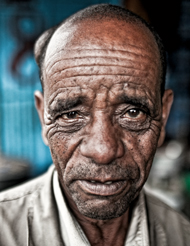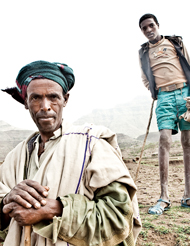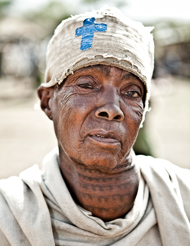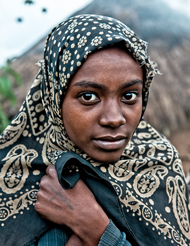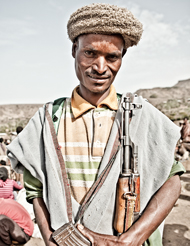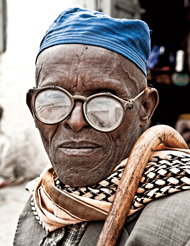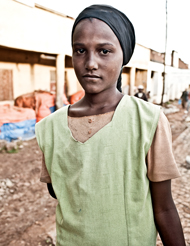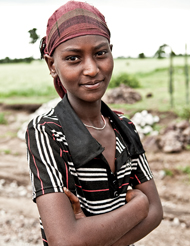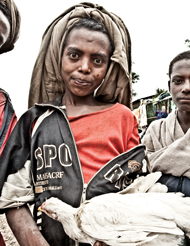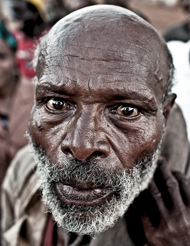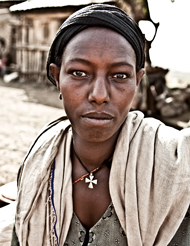|
|

In Ethiopia
The faces of the ancient land reveal themselves in a cross-country journey
PHOTOS AND TEXT BY ANDREW STANBRIDGE, MFA07
I arrived in Ethiopia in May 2011 with a head full of visual clichés. Starving children. Stone churches, clay-lipped seminude figures. All those bleak images that dominate magazine articles and photo books about Ethiopia. Exploring the country, I had one month to shatter the stereotypes and find something of the untold Ethiopia. I traveled by truck, wagon, foot, and donkey, covering a large swath of the geography. From the rainy coffee-growing hills of the south to the exhaust-fumed streets of the capital, Addis Ababa, and onward to the high desert mountains of the north, I became fascinated by the diversity of both the landscapes and the people who endure them.
Acquaintances who knew the country had warned me that it was an extremely difficult place to photograph people. Since most of my work deals with human beings, this was of some concern to me. But we photographers have a sort of dance we employ to gain intimacy with the people we want to photograph. For me, it generally starts with a big smile and an unthreatening approach that offsets my six-foot-four-inch frame and shaved head.
I came away with photographs of hundreds of people of all ages, economic levels, and belief systems. From Coptic Christian women with crosses tattooed on their foreheads to butchers whacking goats’ heads off by the dozen and hanging the carcasses to tantalize their customers, from Muslim herders to sellers of the herbal stimulant known as chaat, from teenage pickpockets to farmers still living as in biblical times—fighting the arid, rocky landscape day after day with a stone-and-wood hoe—each individual gave me more insight into the complicated weave of Ethiopian society. Often a crowd would gather around me as I worked, wanting to see the images on the back of my camera. Some would then ask (or demand, if inebriated) to have their own portraits taken. And no, no one was asking for money. The only real resistance I met was from authority figures: the secret police who shooed me away from scenes they considered too squalid to photograph, and a soldier near the Somali border—where people had been nothing but gracious to me—who showed up out of nowhere and insisted I would be shot if I stayed any longer.
My large folio of images will go into a book depicting this other Ethiopia. Meanwhile, the portraits shown here capture just a few of the people who shared something of themselves with me. They are the images where, as I made them, the bustling world evaporated for a brief instant and the subject and I gazed at each other in a moment of camaraderie.
As I left the country, a new famine was beginning in the east. Images of starvation again flooded televisions and newspapers, in-creasing my determination to show that there is more to Ethiopia than hunger and despair.
For more images of Ethiopia visit andrewstanbridge.com/ethiopia.
|
|



